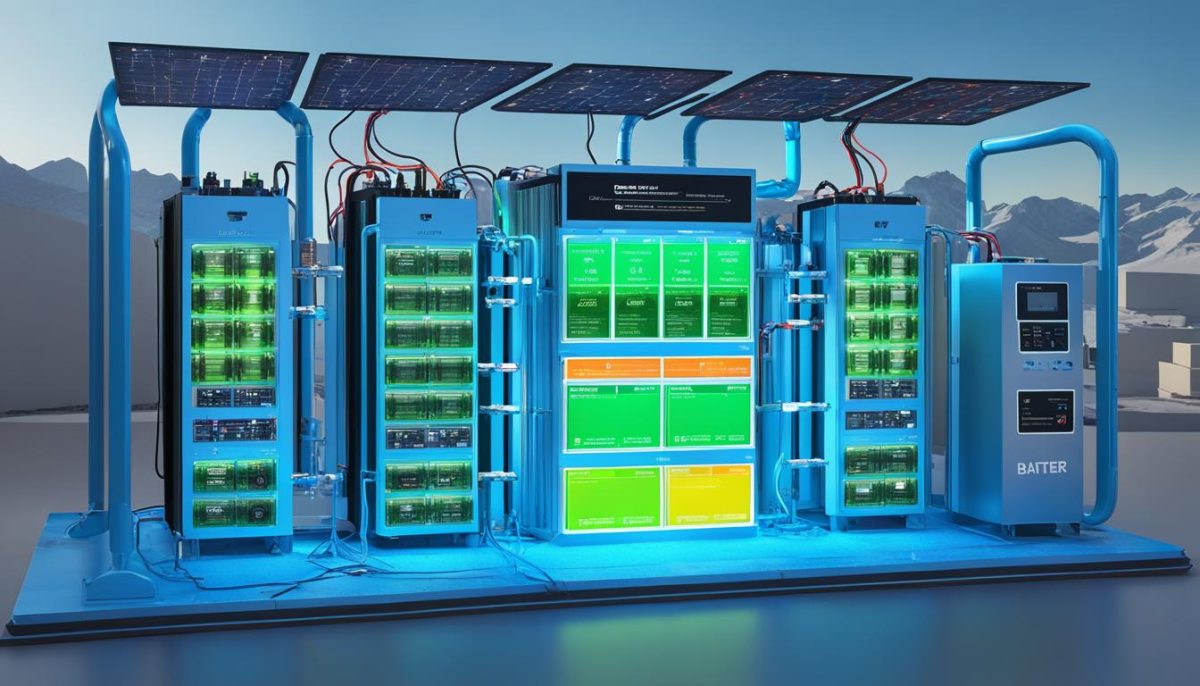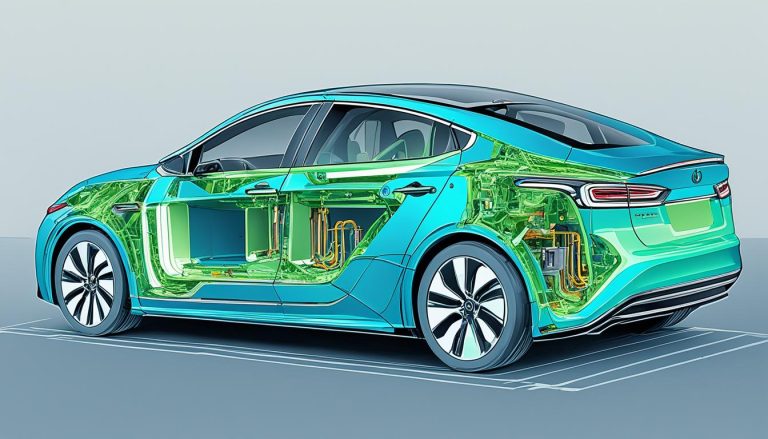How Do Battery Energy Storage Systems Work
Welcome to our exploration of Battery Energy Storage Systems (BESS) and the mechanics behind how they work to ensure grid stability and energy efficiency. In this section, we will dive into the inner workings of this innovative technology and its role in shaping the modern energy landscape.
Imagine a world where renewable energy sources, such as solar and wind, can reliably power our homes and businesses around the clock, regardless of weather conditions. That’s where Battery Energy Storage Systems come into play, acting as the missing puzzle piece in our transition towards a sustainable future.
So, how exactly do these systems work their magic? By capturing and storing excess electricity generated by renewable energy sources during times of high production and delivering it back to the grid during peak demand periods, battery energy storage systems contribute to grid stability and minimize wastage. They act as a bridge, ensuring that renewable energy is available even when the sun isn’t shining or the wind isn’t blowing.
At the heart of these systems is the battery itself, a critical component that stores the excess energy. Alongside the battery, a power conversion system and energy management software regulate and optimize the flow of electricity, ensuring efficient storage and release when needed.
Throughout this section, we will untangle the complexities of Battery Energy Storage Systems and shed light on the charging and discharging processes involved. We will also explore the various applications and benefits of these systems, from stabilizing renewable energy sources to enabling load shifting and peak shaving.
Join us on this enlightening journey as we delve deeper into the mechanics of Battery Energy Storage Systems and discover their immense potential in creating a more sustainable and reliable energy ecosystem.
Components of Battery Energy Storage Systems
When it comes to Battery Energy Storage Systems (BESS), understanding the various components is essential to comprehend how these systems operate efficiently. Let’s explore the key components that make up a typical BESS.
The battery serves as the heart of the storage system. It stores electrical energy when it is abundant and releases it when needed. Lithium-ion batteries are commonly used in modern BESS due to their high energy density and long cycle life.
The next vital component is the power conversion system. This system regulates the flow of electricity between the battery and the electrical grid. It ensures that energy is converted, stored, and dispatched efficiently, maintaining grid stability and optimizing overall system performance.
Another crucial element of a BESS is the energy management software. This software plays a significant role in monitoring, controlling, and optimizing the operation of the entire system. It enables seamless integration with the grid, facilitates real-time energy management, and ensures maximum efficiency and reliability.
To illustrate how these components work together, refer to the simplified diagram below:

| Component | Function |
|---|---|
| Battery | Stores and releases electrical energy |
| Power Conversion System | Regulates electricity flow between battery and grid |
| Energy Management Software | Monitors, controls, and optimizes system operation |
As seen in the diagram and table, each component plays a crucial role in ensuring the efficient storage and release of energy within a Battery Energy Storage System. Understanding these components is key to unlocking the full potential of this innovative technology.
Charging and Discharging Processes in Battery Energy Storage Systems
Understanding the charging and discharging processes in Battery Energy Storage Systems (BESS) is crucial to harnessing their full potential. These processes allow electricity to be stored and released efficiently, supporting various applications across industries and contributing to a more sustainable energy landscape.
During the charging process, electricity is stored in the battery, preparing it for future use. This process involves the conversion of electrical energy from an external source, such as the electrical grid or renewable energy systems, into chemical energy stored within the battery cells. The conversion process varies depending on the type of battery technology used, but the overall objective remains the same: to store energy safely and efficiently.
On the other hand, the discharging process involves the release of stored energy from the battery when it is needed. This process is essential for supplying power during peak demand periods or when renewable energy sources are not generating sufficient electricity. The energy stored within the battery is converted back into electrical energy, which can be delivered to the grid or utilized directly by connected devices.
Efficient Energy Transfer Technologies
Efficiency is a critical aspect of charging and discharging processes in BESS. To maximize energy transfer and minimize losses, various technologies are utilized:
- Power Electronics: Power conversion systems, such as inverters and converters, facilitate the seamless transfer of energy between the battery and the connected devices or grid. These devices ensure high efficiency by regulating voltage levels and converting direct current (DC) to alternating current (AC) as required.
- Battery Management Systems (BMS): BMS plays a crucial role in monitoring and optimizing battery performance during the charging and discharging processes. It balances the state of charge, manages voltage levels, and protects the battery from overcharging or over-discharging, ensuring safe and efficient operation.
- Smart Energy Management Systems: These systems leverage advanced algorithms and control mechanisms to optimize the charging and discharging of BESS. By incorporating real-time data on energy consumption, grid demand, and renewable energy generation, they enable intelligent decision-making for maximizing efficiency and grid stability.
The integration of these technologies ensures that the charging and discharging processes in Battery Energy Storage Systems are efficient, reliable, and adaptable to the evolving energy landscape.
| Benefits of Charging and Discharging Processes in BESS | Applications |
|---|---|
| Enables integration of renewable energy sources into the grid, reducing reliance on fossil fuels | Grid-scale energy storage for stabilizing intermittent renewable energy sources like solar and wind |
| Supports load shifting, allowing energy consumption during off-peak hours when electricity rates are lower | Commercial and industrial facilities for optimizing energy usage and reducing costs |
| Provides backup power during power outages, ensuring uninterrupted operation of critical systems | Residential energy storage systems to enhance energy resilience |
| Facilitates frequency regulation and voltage stabilization, enhancing grid stability and reliability | Grid ancillary services for improving overall power system performance |
Applications and Benefits of Battery Energy Storage Systems
Battery Energy Storage Systems (BESS) have a wide range of applications and offer numerous benefits that contribute to a more sustainable and reliable energy ecosystem. These systems play a crucial role in stabilizing renewable energy sources, enabling load shifting, and implementing peak shaving strategies.
One of the key applications of BESS is in stabilizing renewable energy sources such as wind and solar. As these sources are dependent on weather conditions, the availability of energy can fluctuate. By integrating battery storage systems, excess energy produced during favorable conditions can be stored and released when there is a high demand or when renewable generation is low. This provides a reliable supply of clean energy, reducing the reliance on traditional fossil fuel-based power plants.
Another significant benefit of BESS is its ability to enable load shifting and peak shaving. Load shifting involves storing energy during off-peak hours when demand is low and releasing it during peak hours when demand is high. This helps to alleviate strain on the power grid, avoids the need for costly infrastructure upgrades, and optimizes energy consumption. Additionally, BESS can assist in peak shaving by supplying stored energy during peak demand periods. This reduces the need to draw power from the grid, resulting in cost savings and more efficient energy usage.
Implementing Battery Energy Storage Systems offers both economic and environmental advantages. On the economic front, BESS can help businesses and utilities save on electricity costs by reducing peak demand charges and enabling energy arbitrage. Moreover, these systems provide a reliable backup power supply during grid outages, ensuring uninterrupted operations. From an environmental perspective, BESS help reduce carbon emissions by integrating renewable energy sources into the power grid and reducing reliance on fossil fuels. This contributes to a greener and more sustainable future.







